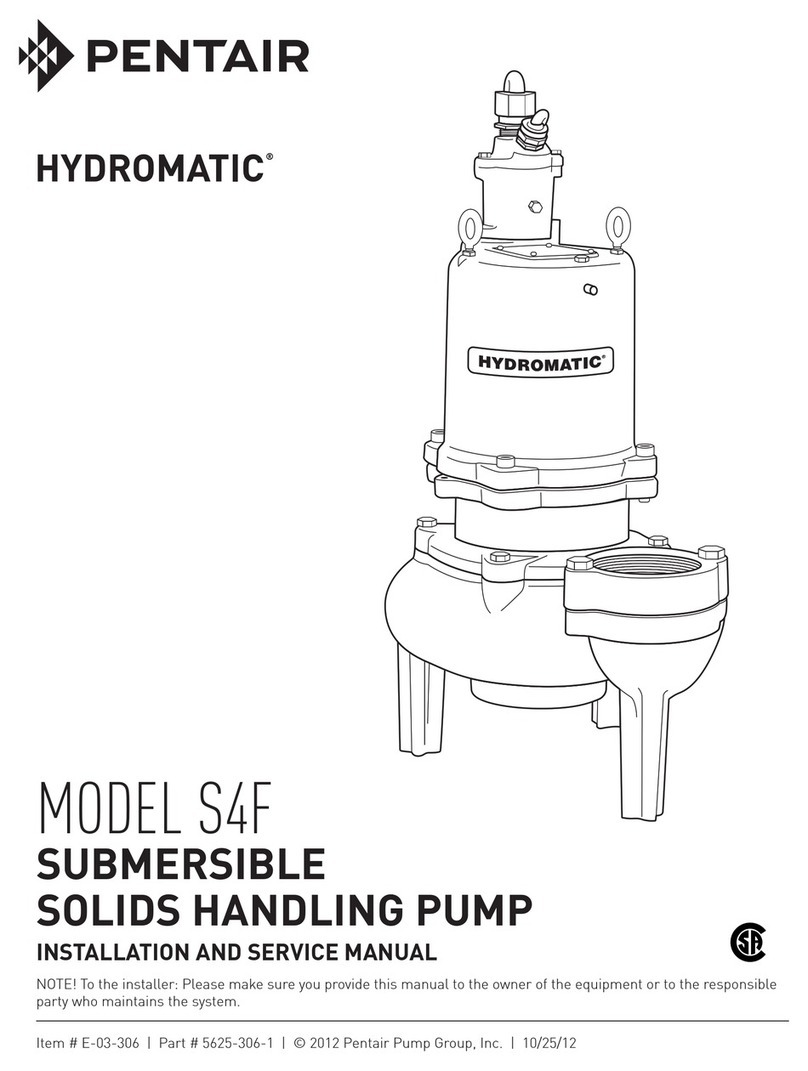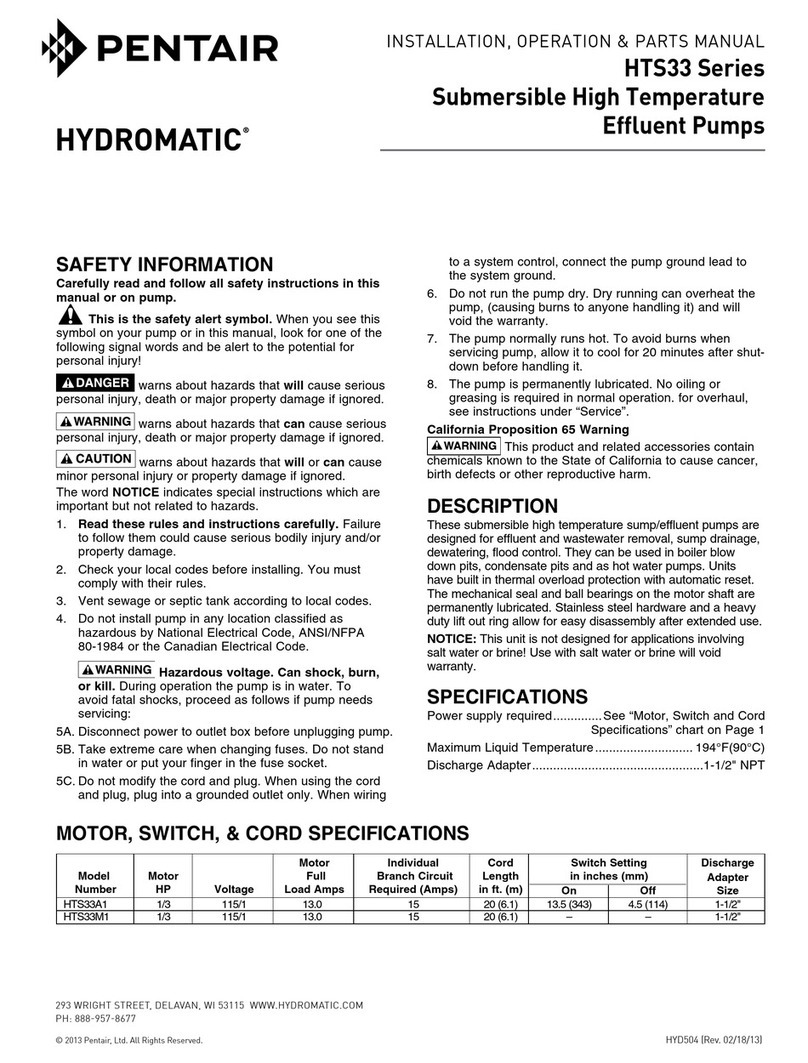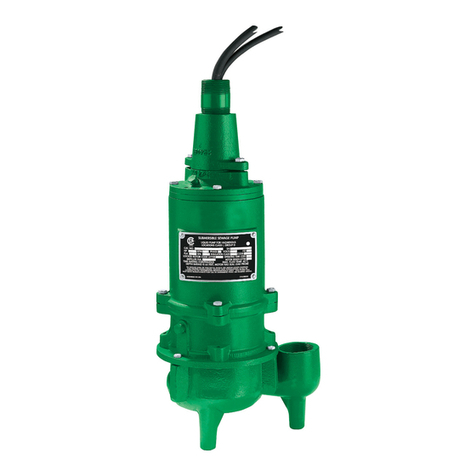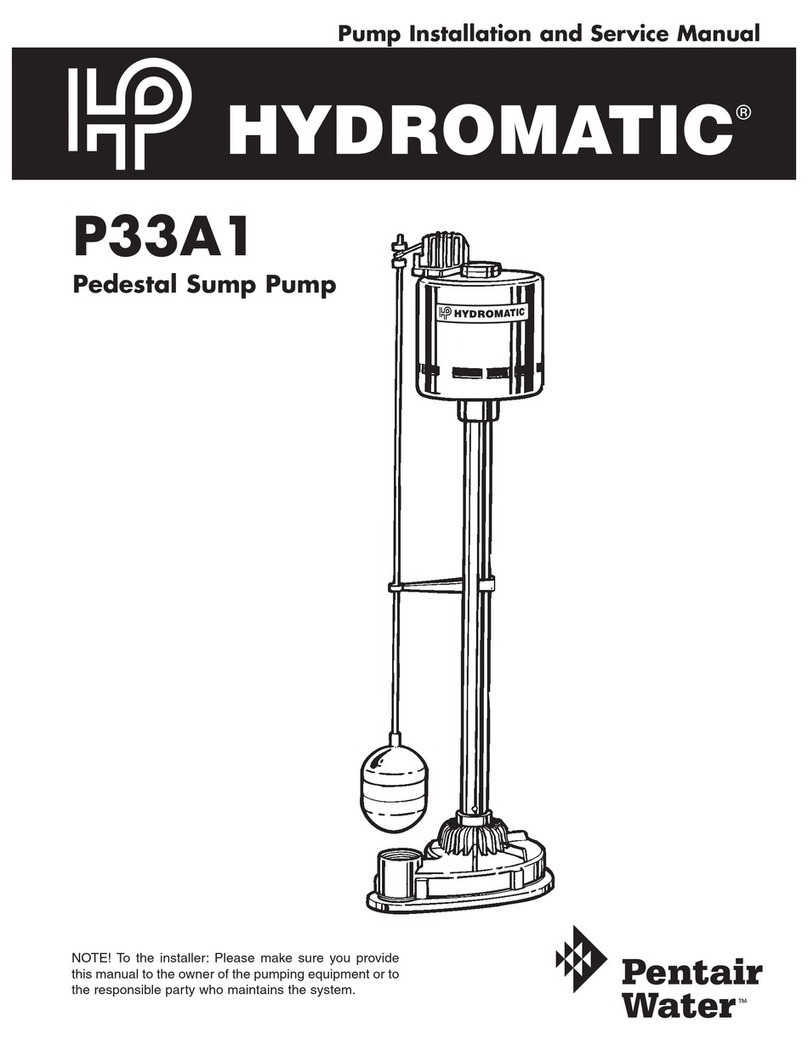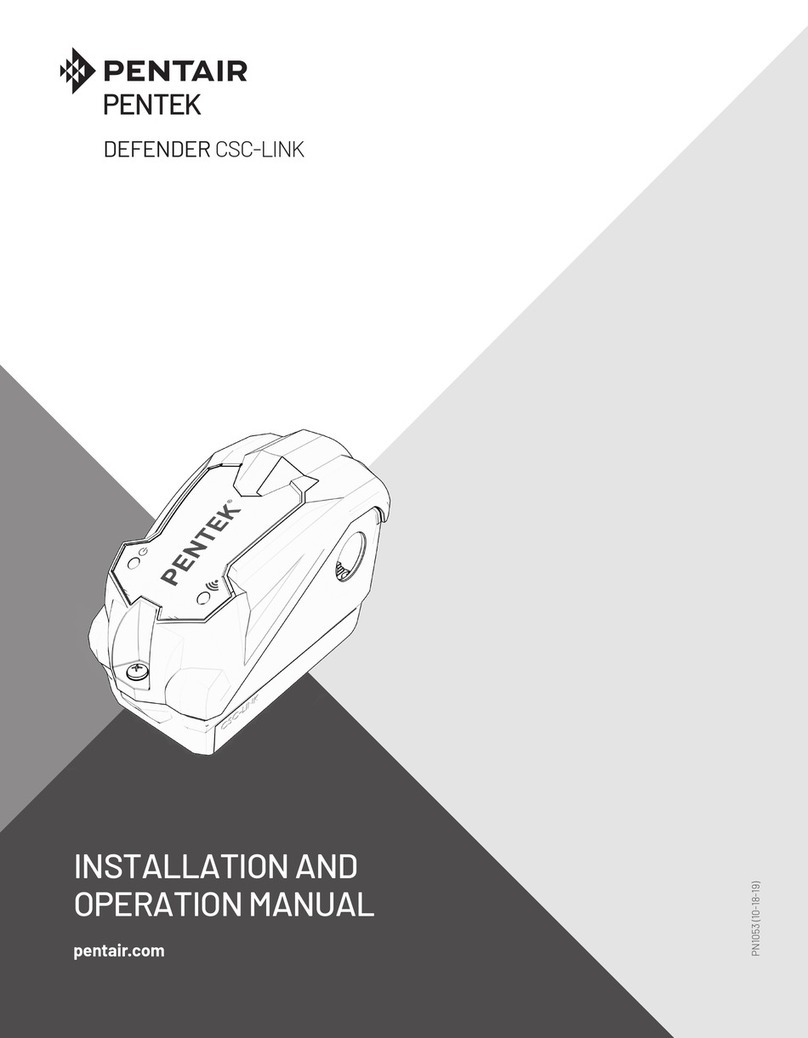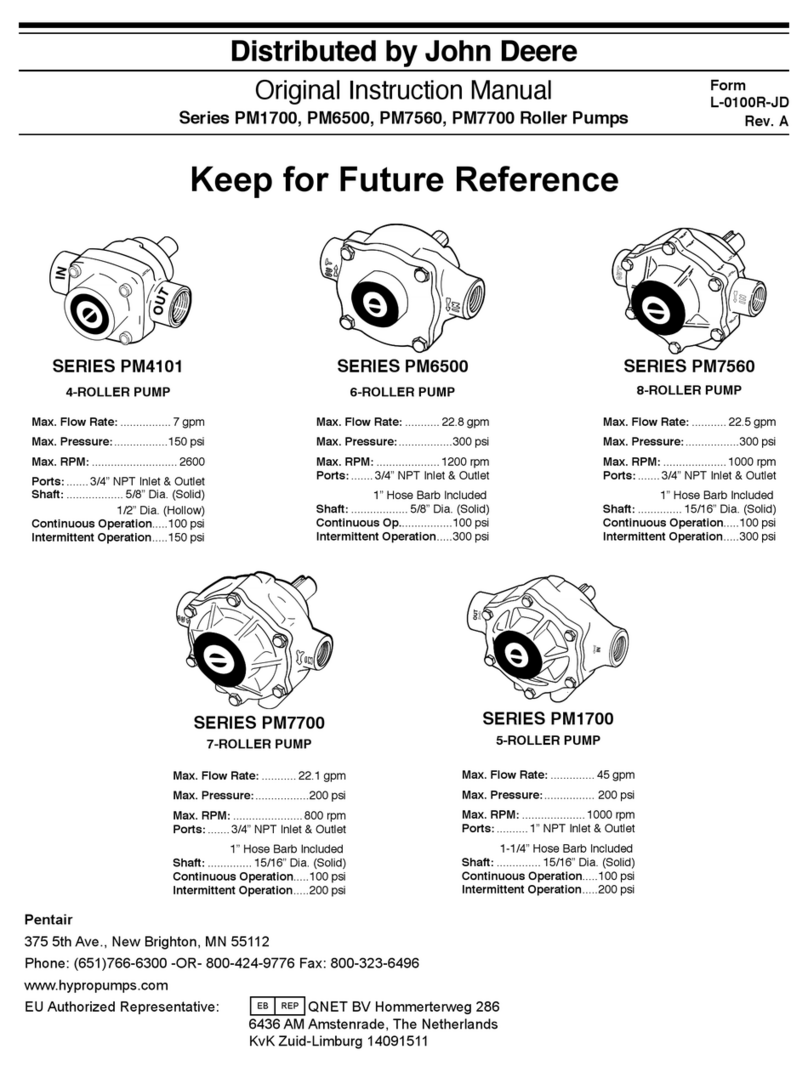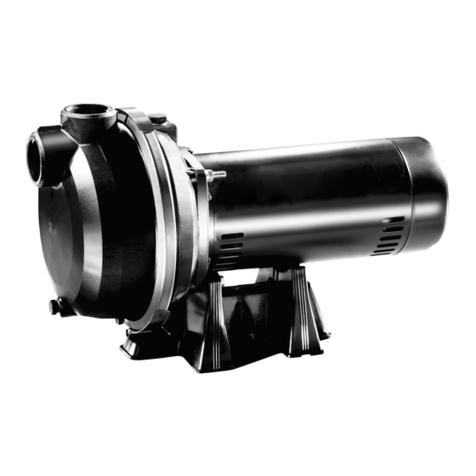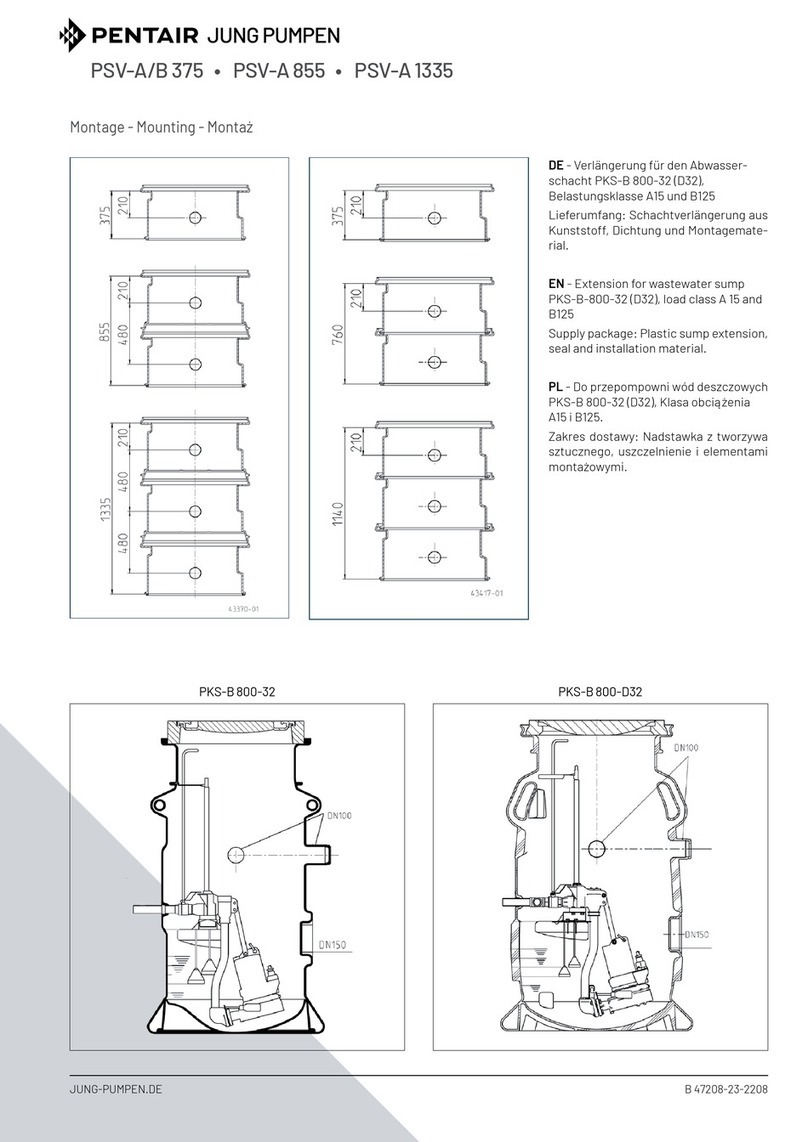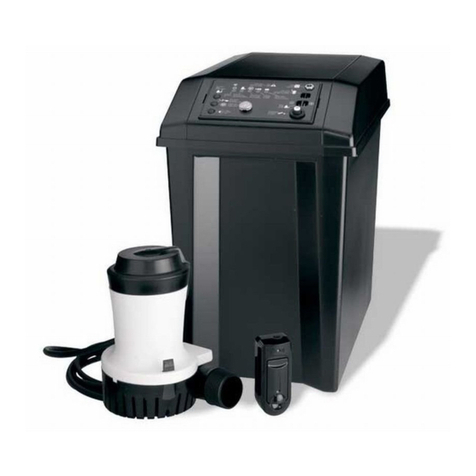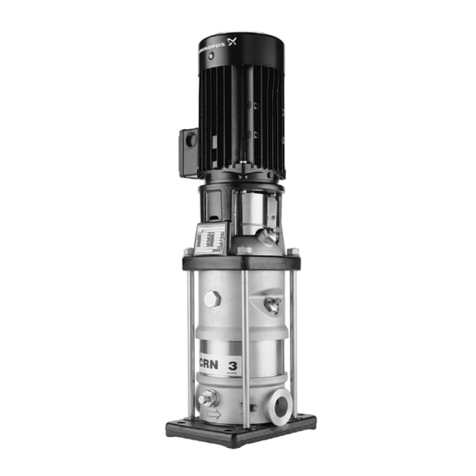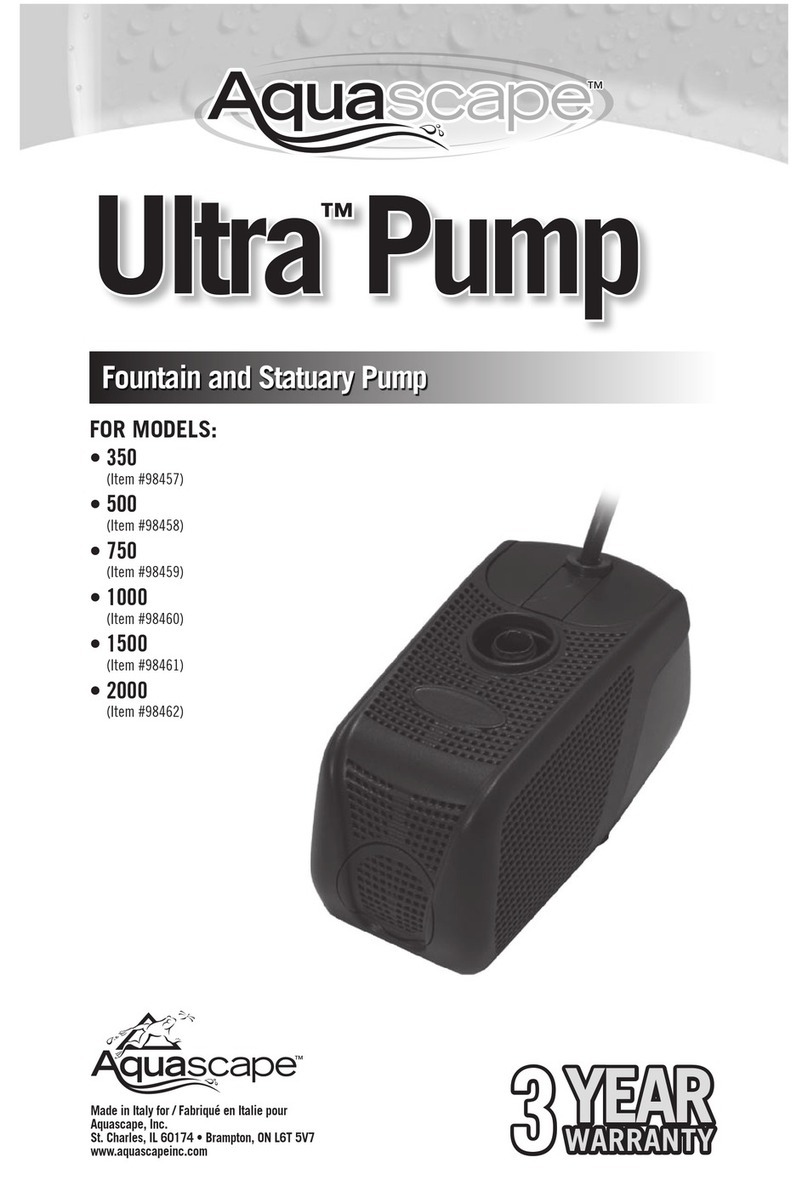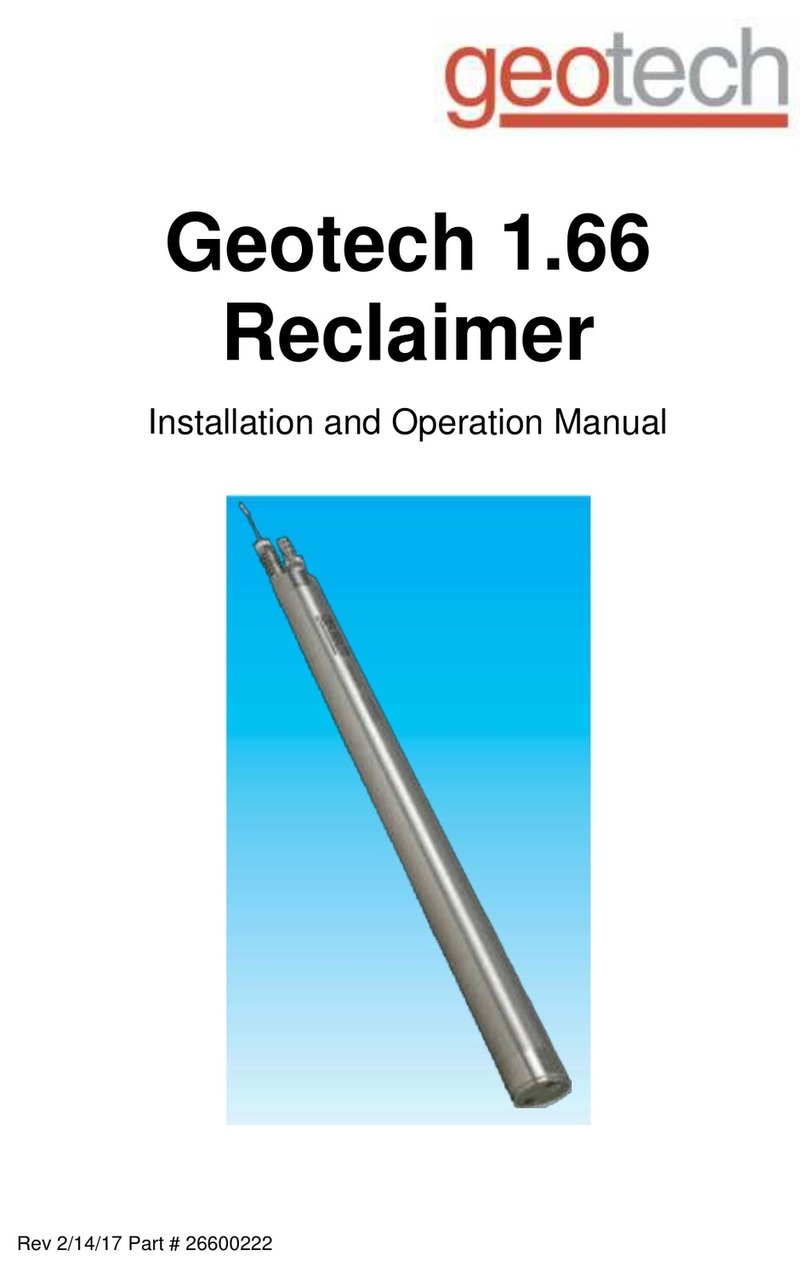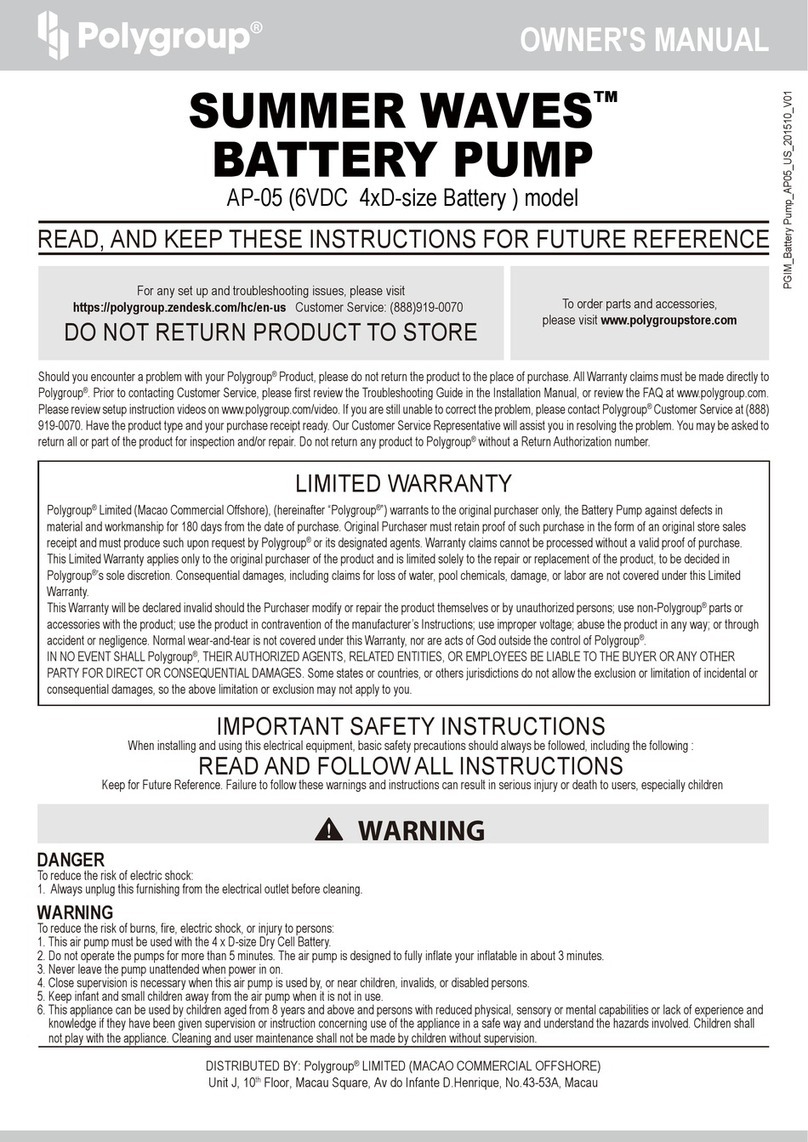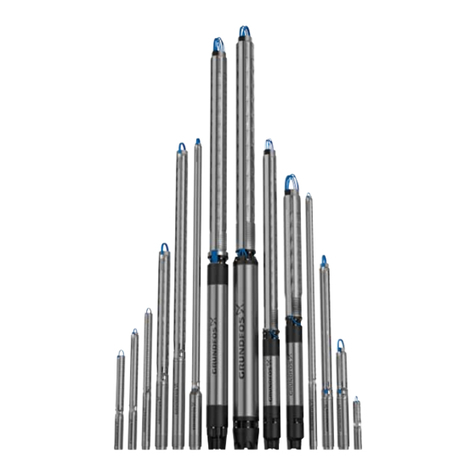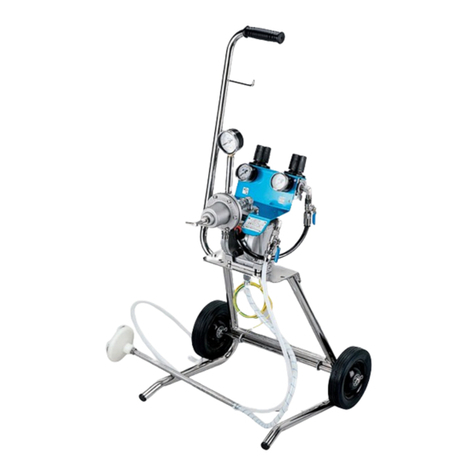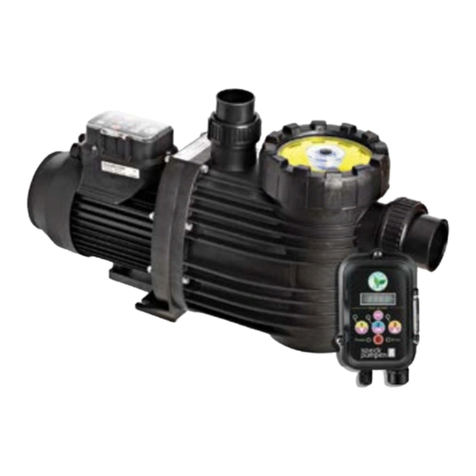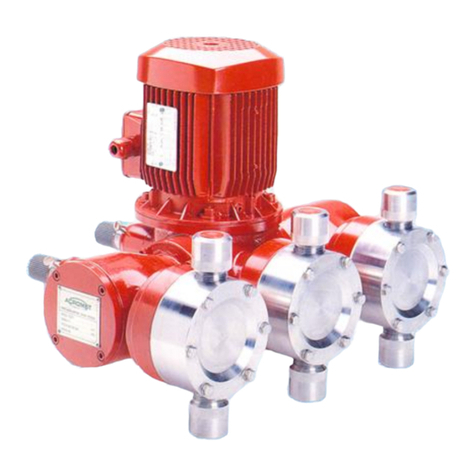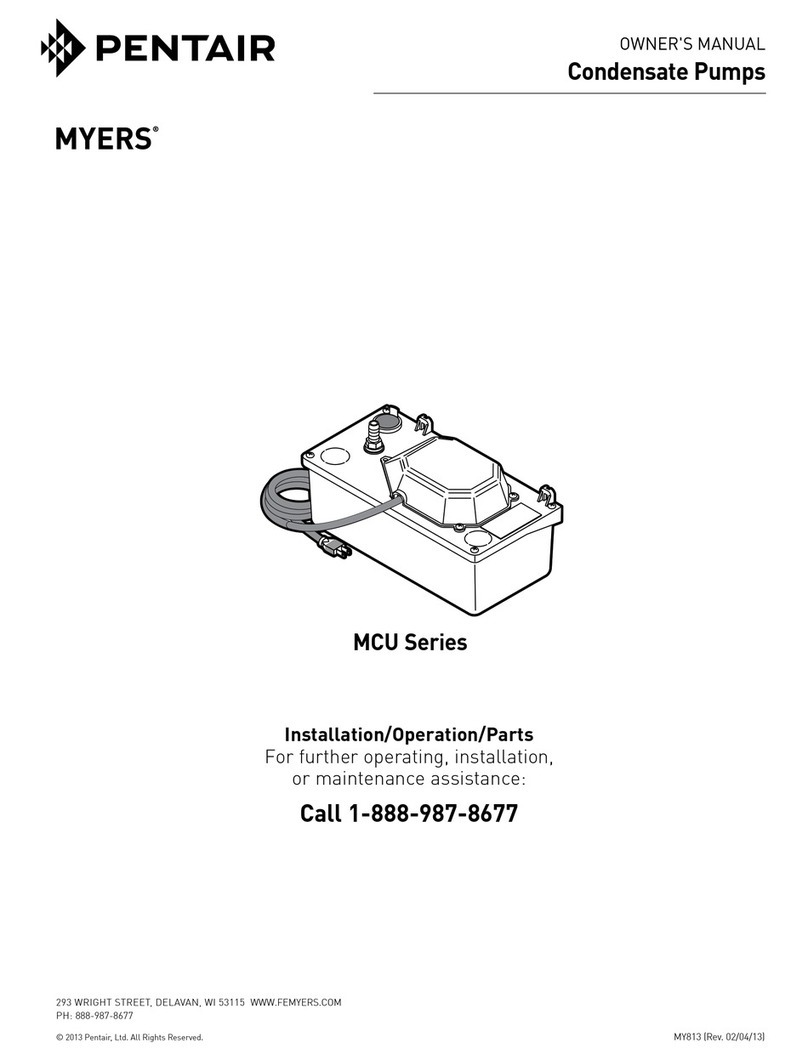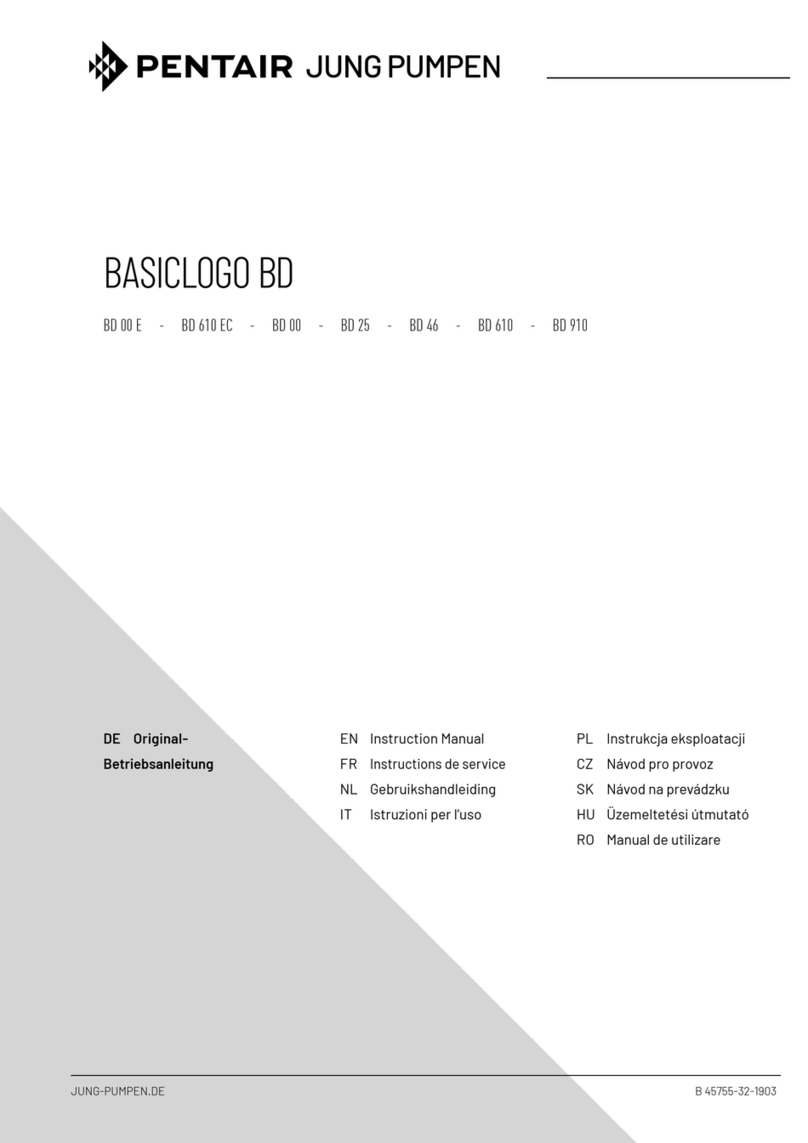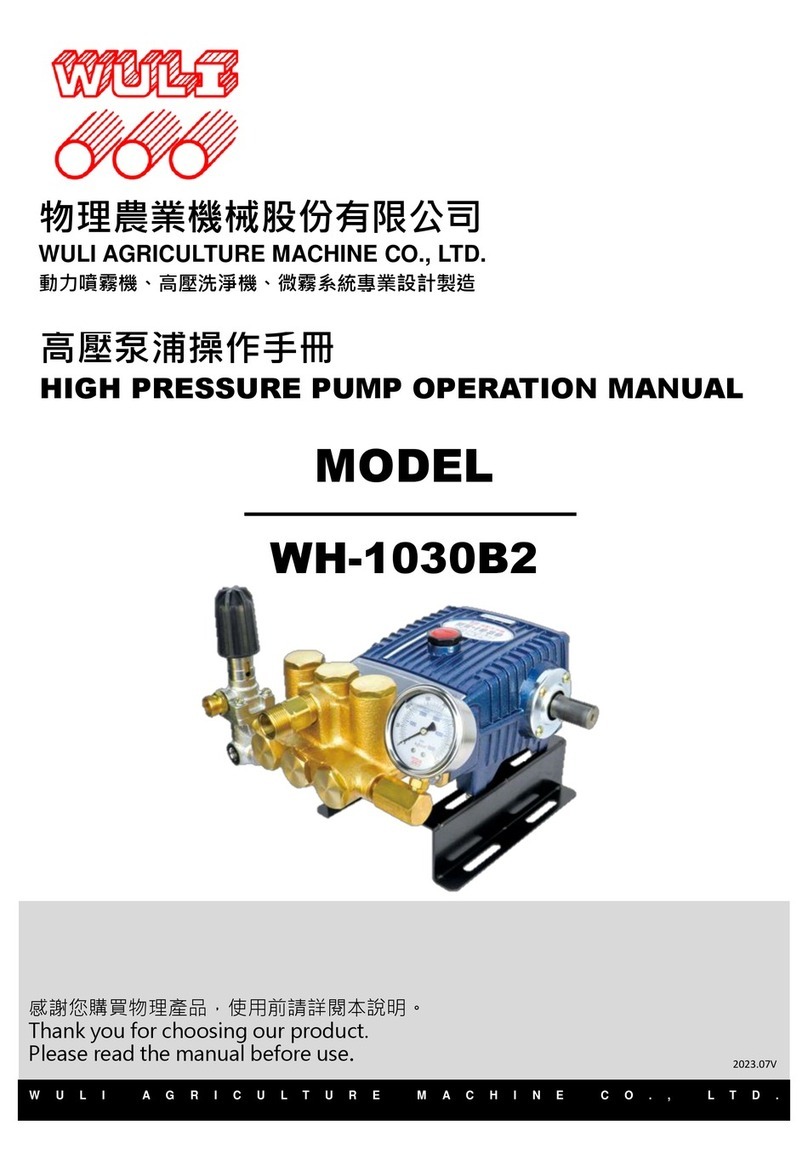
23833A551 11/08/12
3
If raw sewage must be pumped in the home, use
outside basins that connect with pressure sewer
mains or gravity sewers, or run to septic tanks.
Basins can be used inside the home where extra
capacity sump pumps are required for water softeners
and wash water.
If an inside basin is used, it is usually installed at the
time of pouring the concrete floor.
Pumps can be installed in a compartment of septic
tanks for pumping to pressure sewer mains, gravity
sewers, leach fields, or evaporation mounds.
PROPER VENTING FOR BASINS
INSTALLED INSIDE
All inside sealed basins must have a 2" or 3" vent pipe
installed in accordance with local codes. Basins for
handling softener water, wash or drainage water do
not have to be sealed or vented.
Outside basins are usually of fiberglass and from 4 to
8 feet deep and have a sealed cover. Pump is usually
installed with a lift-out rail system so that pump can
be removed without disturbing the discharge piping.
The check valve comes out with pump for servicing.
Complete lift-out systems mounted in fiberglass
basins are available to meet customer specifications.
WARNING: Basin must be vented in accordance
with local plumbing codes. These pumps are not
designed for and CANNOT be installed in locations
classified as hazardous in accordance with the
National Electric Code ANSI/NFPA 70.
PIPING
Pumps are fitted with 2" or 3" female threaded pipe
flange. Galvanized or PVC plastic pipe can be used.
Plastic pipe is preferred for raw sewage or septic tank
effluent.
CHECK VALVES AND SHUT-OFF VALVES
All pumps must have check valves and shut-off valves
in the discharge line. Check valves must be flapper
type with outside spring or ball type. Shut-off valves
can be ball or gate type. Plastic construction for both
check or shut-off valves is preferred.
HOW TO SET CONTROLS FOR
SIMPLEX SYSTEMS
1. Automatic systems — These systems have the
float switches mounted on the pump, so pump is
installed in the basin and motor cord is plugged
into GROUNDED receptacle. For sealed basin
cover, power cord is brought through a split rubber
plug in the basin cover.
2. Where 2 float controls are used, the turn-on control
is set 3" to 6" above top of motor, and the turn-
off control is set about 6" to 8" above bottom of
basin. If a high level alarm control is used, it is set
about 6" above upper control. If basin depth will
not allow these settings, closer spacing can be
used.
3. Where ALC or AWS-1 (automatic wet systems)
controls are used, the displacement weights are
set so that turn-on weight is 4" to 6" above top
of motor and lower weight is set about 6" above
basin bottom.
HOW TO START SIMPLEX SYSTEMS
1. For single-phase pumps with MLC or MFLC
control, plug cords piggyback into receptacle and
run water into basin until pump starts. Allow pump
to make several on/off cycles. Leave power cord
plugged in.
If pump runs but does not pump it may be air
locked. Unplug cord and crack union in the
discharge line, then restart pump. This should vent
off any trapped air. Retighten union.
2. With 2 float controls turn on power at the control
box and run water into basin. When level gets
above top control, pump should start and continue
to pump until level drops to lower control, stopping
pump. Run pump through several cycles. If pump
runs but does not pump, check air lock. Leave
power on for automatic operation.
3. Where ALC or AWS-1 controls are used, plug in
cord or turn-on power and run water into basin.
When level is about halfway up on upper weight,
pump should start and run until level drops
until about half the lower weight is above water,
stopping pump.
For all cases if motor does not start when water level
is up, check for proper plug-in or that start switch is
on, or if fuse is blown.
ALWAYS HAVE ELECTRICIAN MAKE ELECTRICAL
CHECKS.
STARTING PUMP PIGGYBACK
(AUTOMATIC) USING MECHANICAL
SWITCH WITH SERIES PLUG –
SIMPLEX SYSTEM
1. These pumps have a mechanical (mercury-free)
float switch with a 20 ft. cord and a 115 volt or 230
volt series piggyback plug on 1/2 HP with switch
mounted to the pump. On 3/4, 1, and 2 HP, it
requires 20 ft. cord and 230 volt only.
2. Plug the switch cord plug into a proper voltage,
properly grounded outlet.












